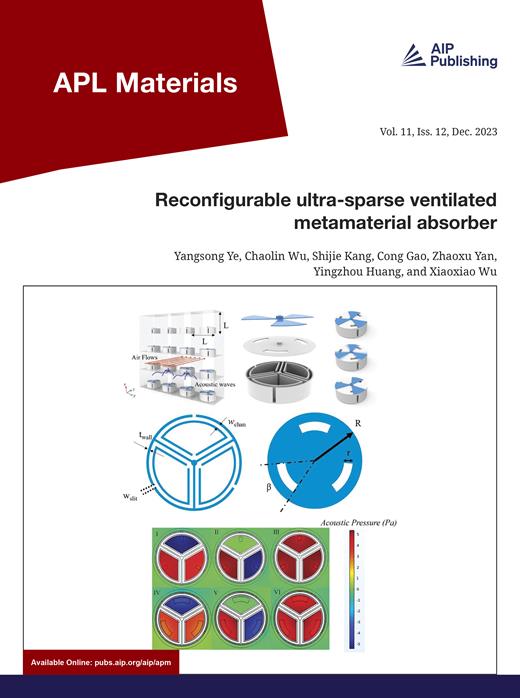对等空间 X 射线计算机断层扫描
IF 5.3
2区 材料科学
Q2 MATERIALS SCIENCE, MULTIDISCIPLINARY
引用次数: 0
摘要
三维倒易空间制图(3D-RSM)可帮助人们深入了解材料错综复杂的微观结构特性,包括空间畴分布、定向长程有序、多层衬底错配、层倾斜和缺陷结构。传统上,3D-RSM 是在同步辐射设施中进行的,在同步辐射设施中,仪器在所有三个方向上的分辨率都受到限制。由于沿轴向的仪器分辨率较低,基于实验室的光源通常被认为是 3D-RSM 测量的次优选择。然而,我们证明,通过采用三维往复空间 X 射线计算机断层扫描 (RS-XCT),可以有效地利用同样的分辨率限制来获取高质量的三维 RSM。通过结合超快倒易空间映射和计算机断层扫描重建程序,基于实验室的三维 RSM 可达到与同步加速器技术相媲美的分辨率。RS-XCT 为基于实验室的 X 射线衍射仪引入了一种实用模式,可对在倒易空间呈现复杂三维散射景观的各种材料进行高分辨率 3D-RSM 测量。本文章由计算机程序翻译,如有差异,请以英文原文为准。
Reciprocal space x-ray computed tomography
Three-dimensional reciprocal space mapping (3D-RSM) offers crucial insights into the intricate microstructural properties of materials, including spatial domain distribution, directional long-range ordering, multilayer-substrate mismatch, layer tilting, and defect structure. Traditionally, 3D-RSMs are conducted at synchrotron facilities where instrumental resolution is constrained in all three directions. Lab-based sources have often been considered suboptimal for 3D-RSM measurements due to poor instrumental resolution along the axial direction. However, we demonstrate that, by employing three-dimensional reciprocal space x-ray computed tomography (RS-XCT), the same perceived limitation in resolution can be effectively leveraged to acquire high quality 3D-RSMs. Through a combination of ultrafast reciprocal space mapping and computed tomography reconstruction routines, lab-based 3D-RSMs achieve resolutions comparable to those obtained with synchrotron-based techniques. RS-XCT introduces a practical modality for lab-based x-ray diffractometers, enabling high-resolution 3D-RSM measurements on a variety of materials exhibiting complex three-dimensional scattering landscapes in reciprocal space.
求助全文
通过发布文献求助,成功后即可免费获取论文全文。
去求助
来源期刊

APL Materials
NANOSCIENCE & NANOTECHNOLOGYMATERIALS SCIE-MATERIALS SCIENCE, MULTIDISCIPLINARY
CiteScore
9.60
自引率
3.30%
发文量
199
审稿时长
2 months
期刊介绍:
APL Materials features original, experimental research on significant topical issues within the field of materials science. In order to highlight research at the forefront of materials science, emphasis is given to the quality and timeliness of the work. The journal considers theory or calculation when the work is particularly timely and relevant to applications.
In addition to regular articles, the journal also publishes Special Topics, which report on cutting-edge areas in materials science, such as Perovskite Solar Cells, 2D Materials, and Beyond Lithium Ion Batteries.
 求助内容:
求助内容: 应助结果提醒方式:
应助结果提醒方式:


